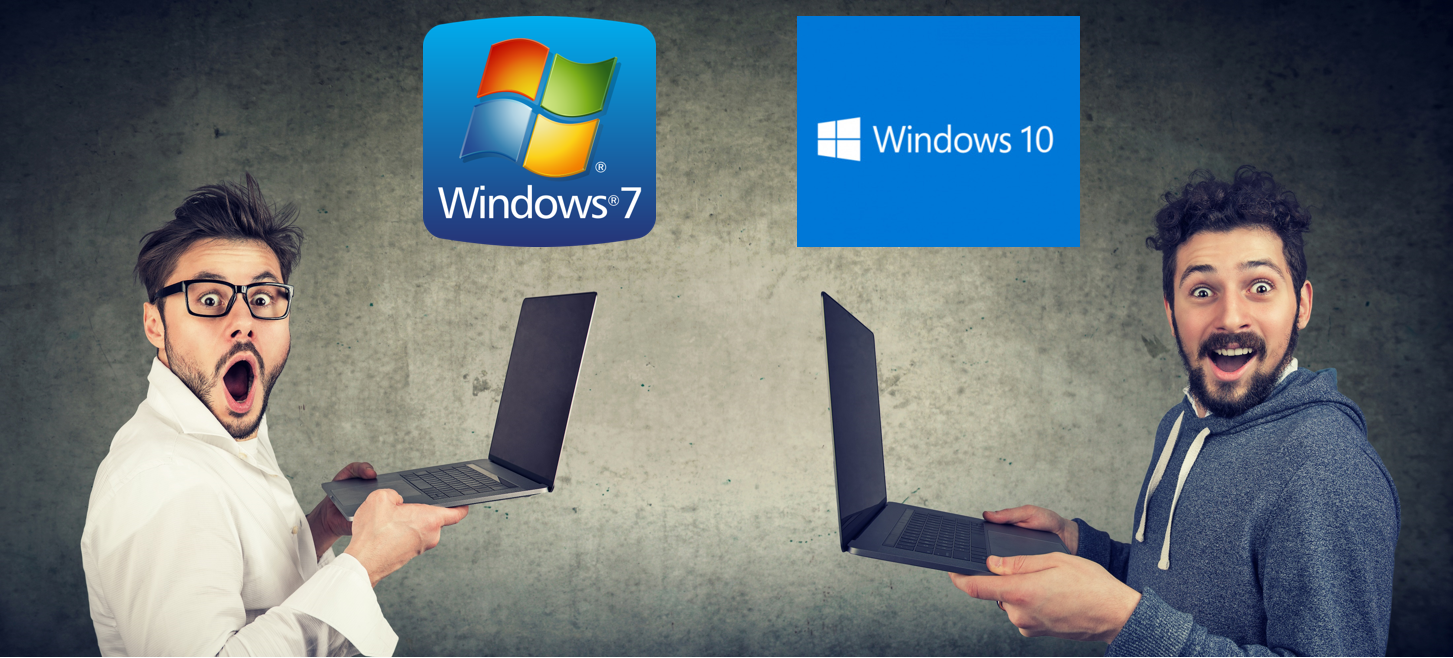
Windows 7 has long been the preferred operating system for many businesses, even after the release of Windows 8 and Windows 10. Many business owners and IT decision-makers heard of Windows 8’s detractors and adopted an “if it isn’t broken, don’t fix it” mentality regarding upgrades. As a result, a number of businesses continue to hold onto Windows 7, despite the fact that Microsoft’s support for the operating system has dwindled since 2015. So why should Windows 7 users make the switch to Windows 10?
Microsoft Will No Longer Offer Support for Windows 7 as of January 2020
This means businesses choosing to stick with Windows 7 after that point will no longer be able to receive updates, exposing their systems to many potential bugs and security issues. However, there is one alternative: organizations with Windows 7 volume licensing who can't make the switch in time will have the option to pay for security updates for 3 additional years. Microsoft reports that the price for this additional security coverage will increase on a year-to-year basis.
In comparison, Windows 10 runs frequent, automatic checks for essential updates to ensure your system maintains optimal performance. Windows 10 Enterprise users will have the ability to delay/postpone updates from installing until they are free. In order to minimize overall downtime, Microsoft has said that they will push these updates to their Enterprise users less frequently.
New Software Releases Are Already Incompatible With Windows 7
Essential program suites such as Office 2019 are not compatible with Windows 7, and this promises to be the trend moving forward with Microsoft ceasing support of Windows 7. Meanwhile, Windows 10 will continue to enjoy constant compatible software and app releases. If your business is in need of an Office suite upgrade, Windows 10 is by far the winner due to its compatibility with Office 2019, the last standalone suite apart from Office 365.
Note: A work around to using Office 2019 on a Windows 7 PC would be to purchase an Office 365 subscription, which is supported on Windows 7. Office 365 is the equivalent to Office 2019 and would receive regular updates whereas Office 2019 does not.
Windows 10 Is Faster
Although Windows 7 still outperforms Windows 10 across a selection of apps, expect this to be short-lived as Windows 10 continues to receive updates. In the meantime, Windows 10 boots, sleeps, and wakes faster than its predecessors, even when loaded on an older machine. While it may seem slight at first, this boost in performance can mean a parallel boost in productivity for your employees.
Windows 10 Is More Secure Than Windows 7
Windows 10 supports two-factor authentication, allowing your employees to easily access their account within a high-security setting. Data loss prevention is increased from the version in Windows 7, but is incorporated in a way that remains unobtrusive for the user. Similarly, the hardware detection features prevent outsiders from accessing your business’s information.
Perhaps the best tool within the security features of Windows 10 is the ability to use the security features as a package, or deploy them individually, creating the best setup for your business’s needs. In addition, you are able to use features like Cortana or turn them off if your business has specific security needs that may be risked by location or voice recognition settings.
Windows 10 Is Easier to Use Than Its Predecessors
Features such as Aero Snap have been tweaked to allow up to four windows on-screen at any given time. In addition, the way in which Windows suggests other windows fill open spaces on the monitor is more user-friendly. Easy, secure login across your company's devices with a PIN allows your employees ease of access to their workstations, and the Microsoft cloud promotes collaboration and sharing like never before. These are just a few of the many reasons as to why your company needs to come up with a Windows 10 upgrade strategy.
Still unsure it’s time to upgrade? Speak with a professional to determine how the end of Microsoft Windows 7 support could affect your business’s operations.









